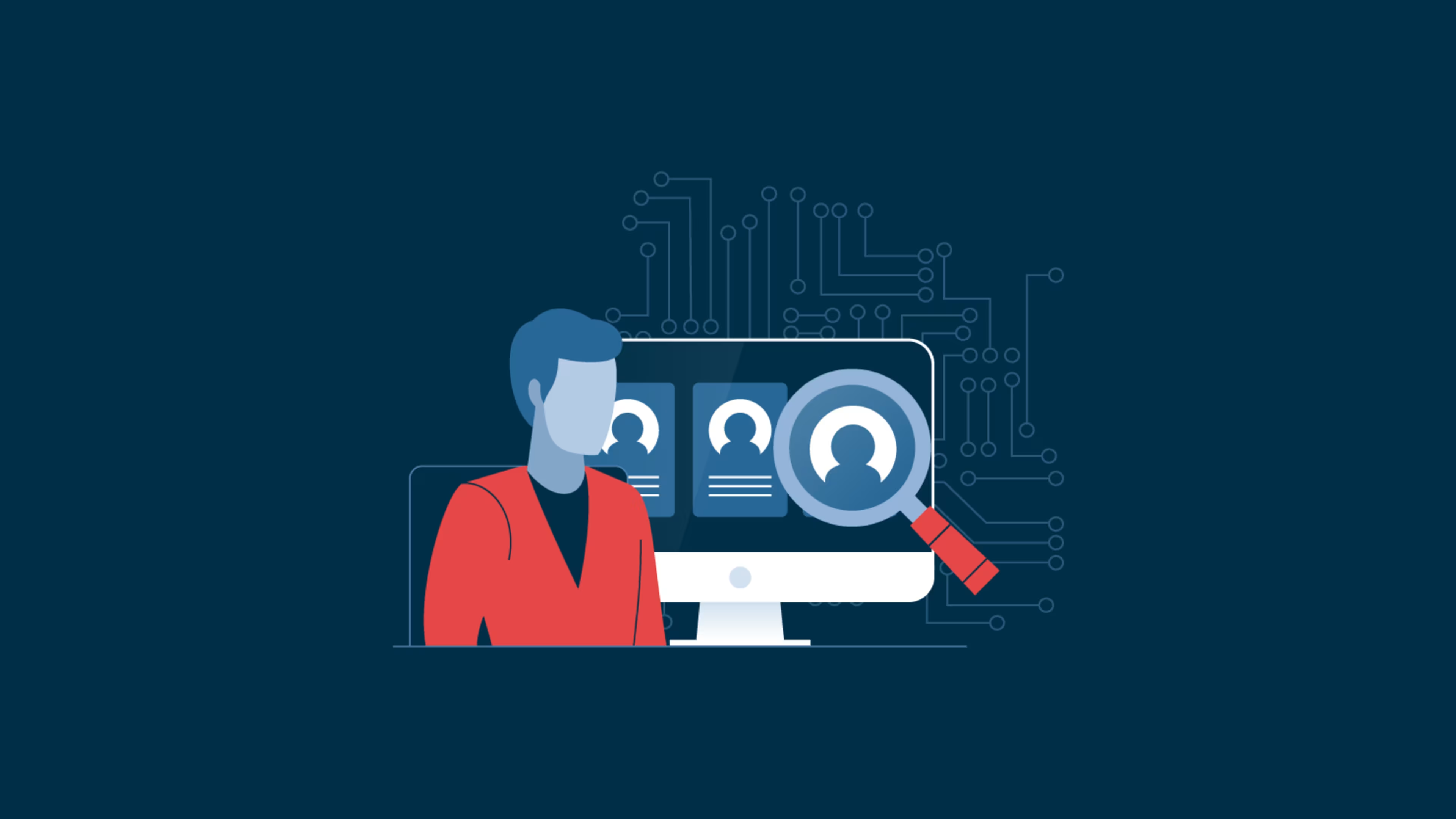The future of HR lies at the intersection of creative and divergent thinking to build human capability and advance HR.
In 2008-09, the widespread crisis was an economic and financial crisis known as the Great Recession. A decade later, 2020-22 have brought more widespread and turbulent crises, including a pandemic, changed work approaches, a shifting job landscape, and a potential recession.
These challenges place HR work centerstage for investors, company boards, business leaders, and HR professionals.
How can we advance HR work?
In this changing context, advancing impactful HR work requires both art and science.
By art, I mean creative and divergent innovations that adapt to changing circumstances to discover new ideas. By science, I mean disciplined and convergent insights that meld theory, research, and practice to deliver on promises. Or in other words: navigate an art & science paradox requiring divergent & convergent thinking.
The divergent and convergent thinking paradox (depicted in the figure below) starts with divergence: identifying challenges and generating options for responding (art centric). Often, creating options leads to a surplus of ideas and actions that diffuse attention and limit results.
Convergence (more science-centric) turns many options into a few priorities that allow execution by focusing energy and action. Both divergence and convergence are necessary for making progress in keeping up with and advancing HR.
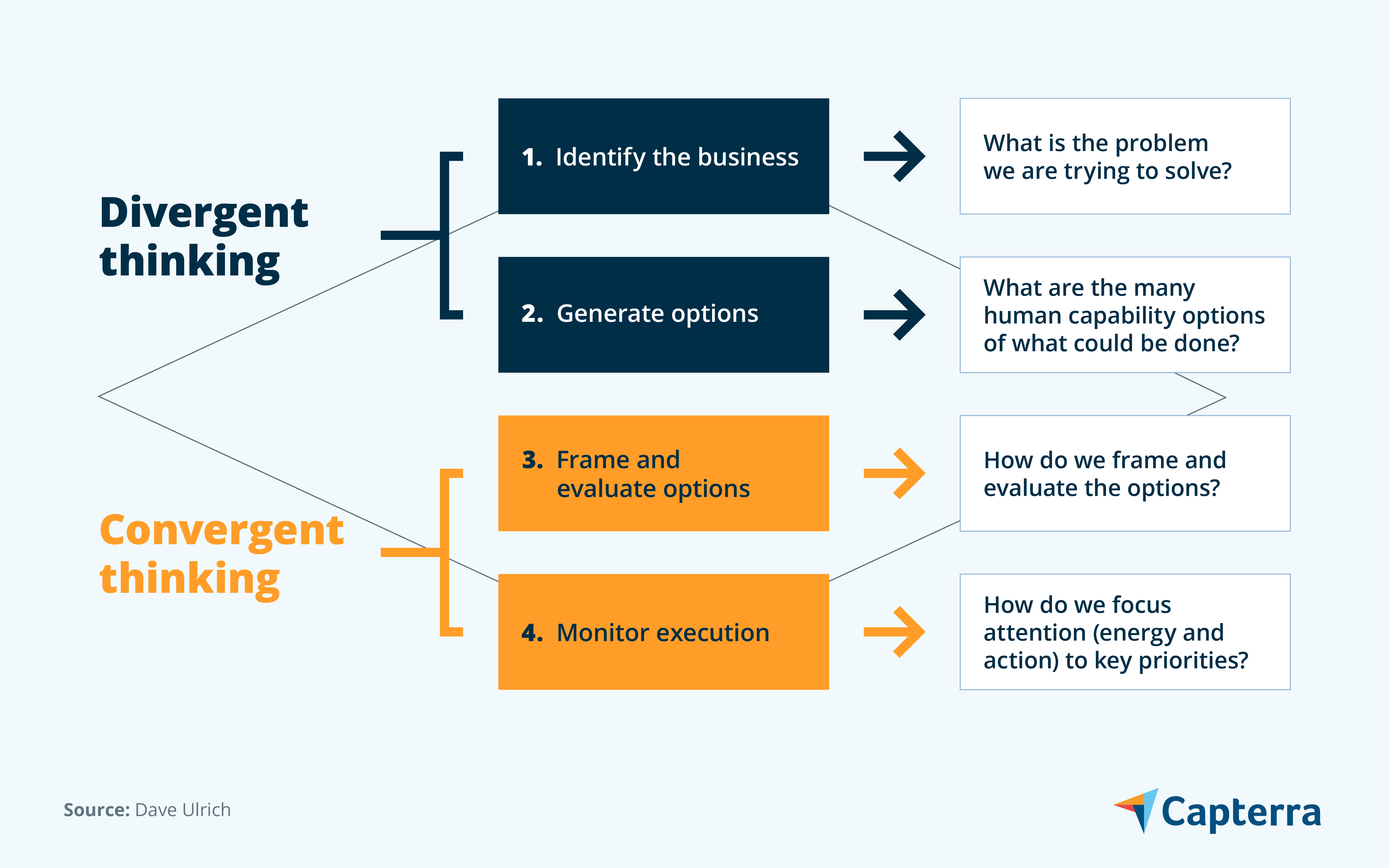
A view of the divergent/convergent paradox (Credit: Dave Ulrich)
How can divergent thinking facilitate new ideas?
Generating new ideas and tools can come from observing others, benchmarking and identifying best practices, experimenting with alternative approaches, acquiring new competencies from outside a business, and continuously improving.
Divergent thinking often leads to many initiatives that an organization may pursue. While innovation is part of progress, chasing initiatives can become faddish, with each new shiny object being seen as a quick fix. In addition, trying to advance multiple initiatives simultaneously can disperse attention and cause a “good is the enemy of great” situation.
Ask yourself, how many of these initiatives has your organization tried or seen being implemented?
Agile organization
Culture changes
Distributed leadership
Leadership academies
Customer-focused agendas
Progress through convergent thinking
Convergent thinking focuses attention to turn many options into streamlined actions. Convergence is less about all that could be done, and instead highlights what should be done.
The value of a framework
Convergence begins with an integrated framework to organize separate ideas into patterns. In studying chess, research found that chess masters possess a “recognition-action” repertoire of concepts (also called chunks, templates, or patterns).
These patterns are frameworks that organize complex chess options into protocols that help chess masters accurately replace pieces on the board if removed, or even help them play when blindfolded.
To become a science, every discipline offers such protocols or integrated frameworks that organize divergent options into patterns. My doctoral training with Bill McKelvey, who wrote the book on organizational systematics (specifically, numerical taxonomy or classification), taught me about the discipline of integrated frameworks, which turns complexity into simplicity, focuses attention, provides conceptual clarity, sets priorities, and offers a blueprint for progress.
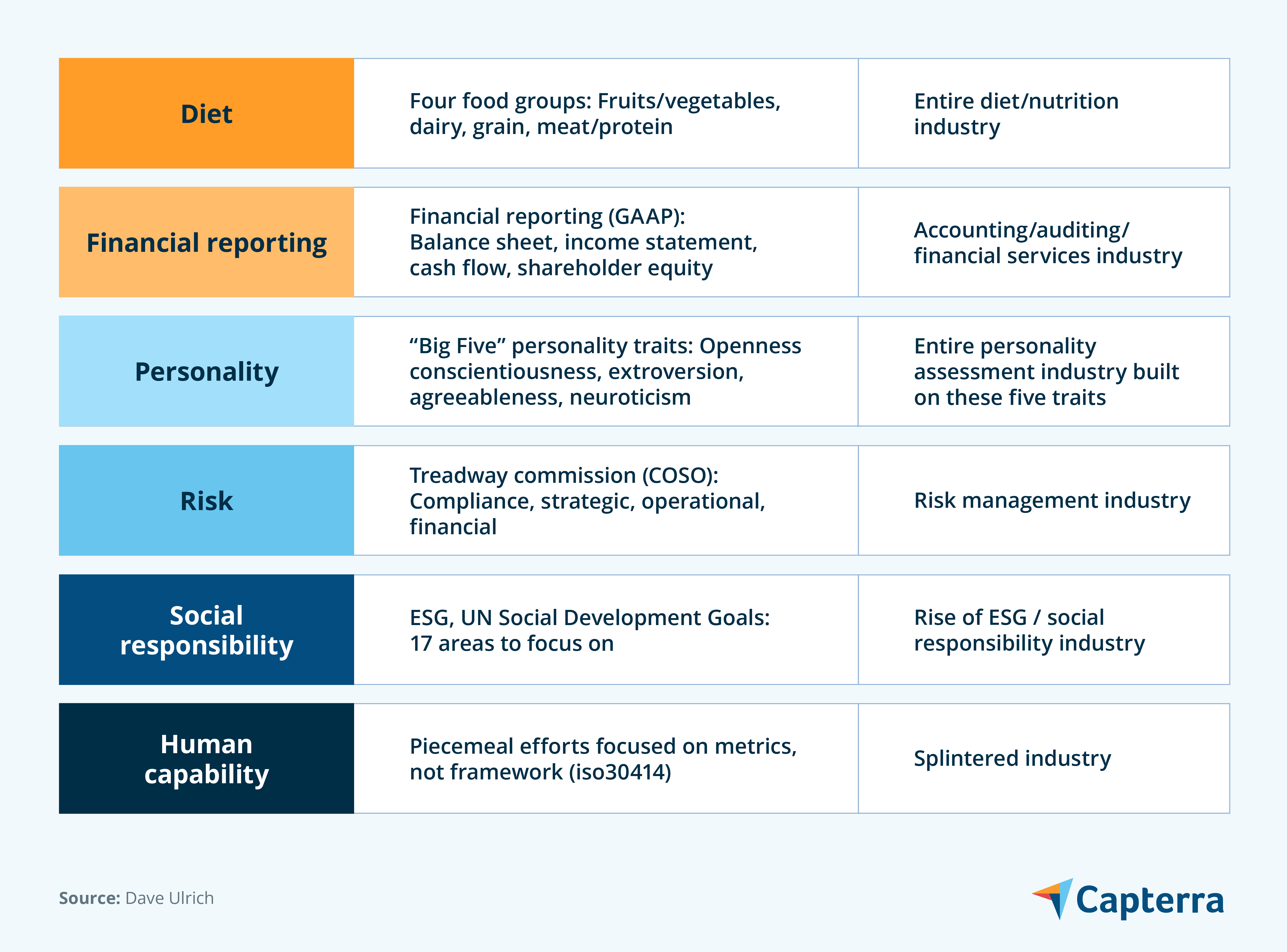
An example of integrated frameworks that organize divergent options into patterns (Credit: Dave Ulrich)
Mental models that create patterns or frames for organizing thinking are critical in the age of technology and turmoil. The disarray of HR initiatives mentioned in the last section indicates that HR as a field may not yet have such an integrated framework.
The human capability framework
The broad field of HR continues to evolve, and needs an integrated human capability framework as a blueprint for HR convergence and progress.[1]
The evolution of HR
HR has historically focused on talent (or human capital) as the HR agenda. Some of my previous work has shown that organization has far more impact on results than talent, and that HR can be the architect of creating organization capabilities.
Thus, in order for HR to continue successfully serving its key stakeholders, it needs to evolve from focusing on human capital to human capability.
Human capability framework or blueprint
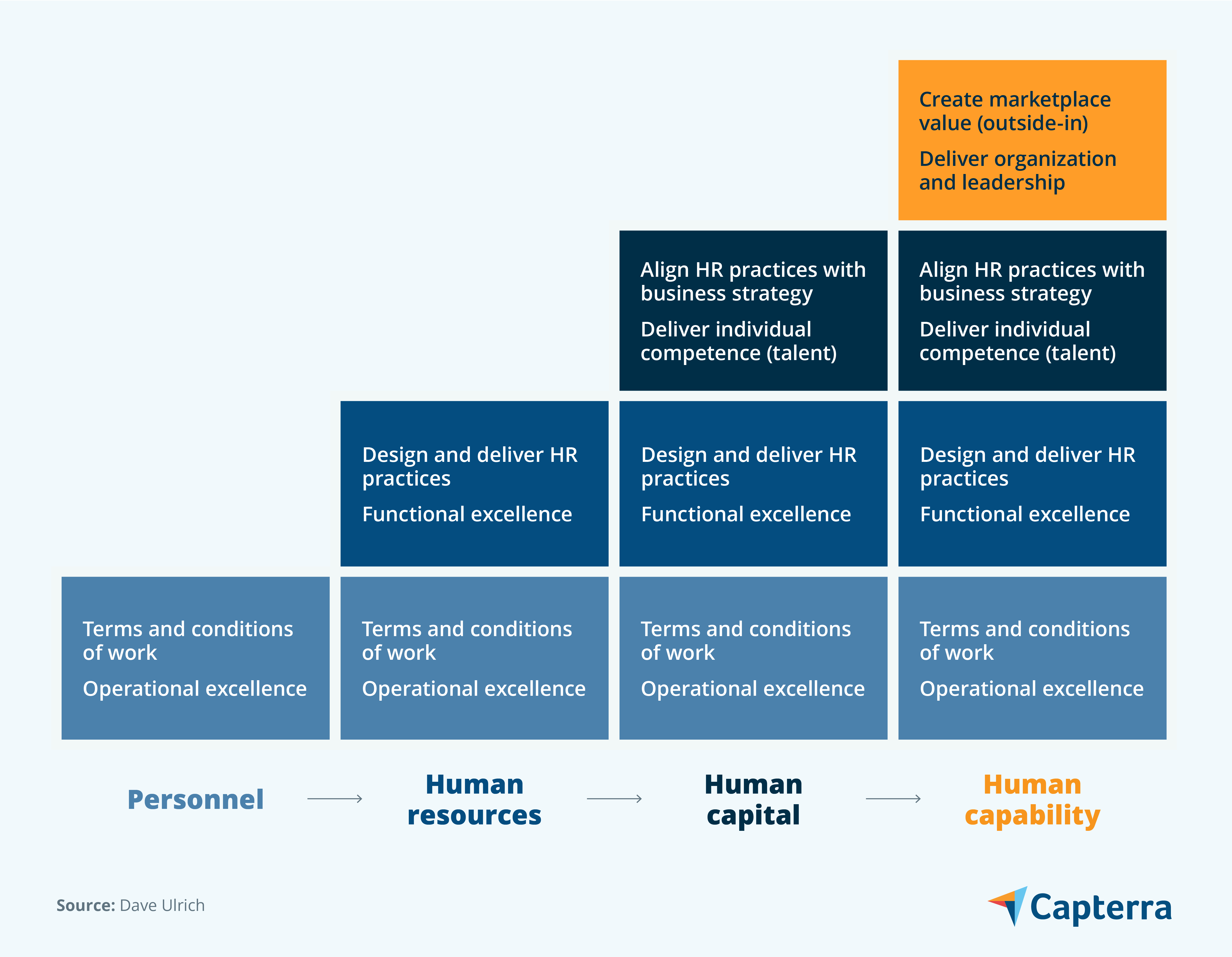
An evolution of the HR agenda (Credit: Dave Ulrich)
The human capability blueprint offers a simple yet robust way to organize HR work into four pathways that create value for all stakeholders inside and outside an organization.
Talent (human capital) deals with what could be done to ensure the right individual competence, workforce, or people.
Organization (aka structure, governance, or culture) focuses on defining the organization capability, workplace, or team.
Leadership emphasizes both individual leaders and collective leadership.
Human resources refers to the HR function or department and the how of accomplishing HR work.
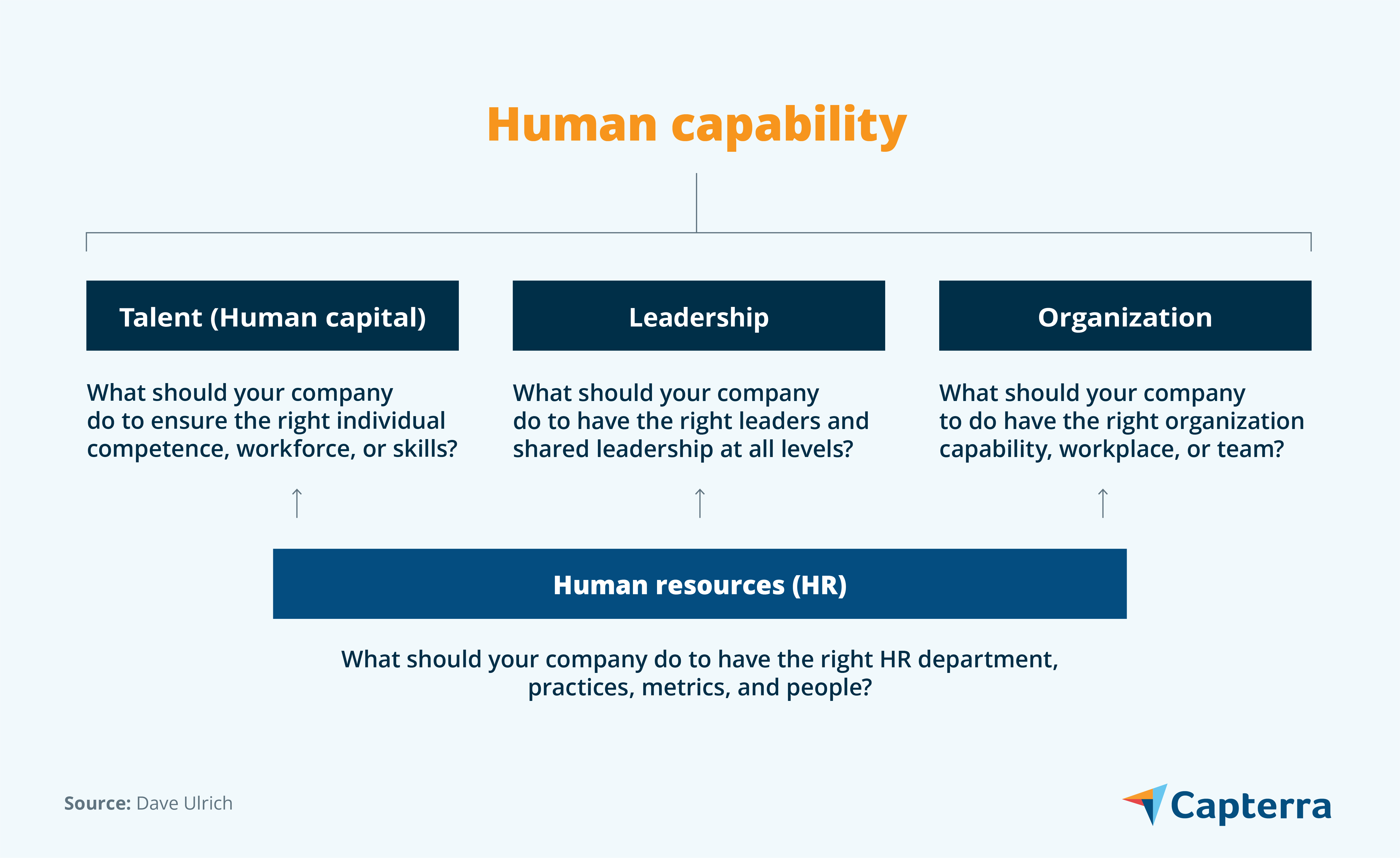
Specific initiatives in each of the four human capability pathways (Credit: Dave Ulrich)
Human capability framework
Under this human capability framework, divergent initiatives can be sorted into one of the four pathways. This means that the onslaught of new ideas fall into categories that can be managed.
For example, there are numerous diets/nutrition approaches, but they all fall back to the four food groups. There are a number of personality tests, but they all draw on the “big five” personality traits.
These four pathways also ensure a breadth of thinking before focusing attention. For example, some HR work focuses only on talent (human) and does not consider organization and leadership issues which are part of the overall HR agenda (capability).
Talent (Human Capital) | Leadership | Organization | Human Resources |
Acquiring talent | Clarifying business case for leadership | Hiring, developing, and managing people | Establishing HR reputation |
Managing employee performance | Defining what leaders know and do | Acting with agility | Serving HR customers |
Developing employees | Assessing leaders and leadership | Establishing strategic clarity | Determining HR purpose |
Managing employee careers & promotions | Developing leaders and leadership | Delivering customer centricity | Governing HR design |
Communicating with employees | Measuring leadership impact | Establishing the right culture | Growing human capability |
Encouraging diversity, equity, & inclusion | Ensuring reputation | Advancing collaboration | Using HR analytics |
Retaining the best employees |
| Promoting social responsibility | Refining HR practices |
Managing departing employees |
| Expanding innovation | Advancing HR professionals |
Tracking employee engagement |
| Fostering efficiency | Strengthening HR relationships |
Creating positive employee experiences |
| Ensuring accountability |
|
|
| Sharing information & articles |
|
|
| Leveraging technology |
|
Specific initiatives in each of the 4 human capability pathways
By clustering insights into the four human capability pathways, an HR or business leader may be able to make more progress by focusing attention on whichever of the four pathways best delivers desired results. To deliver results, a leader can ask: what do we need to do with talent + leadership + organization? This ensures a holistic approach to human capability, not a piecemeal approach.
Based on the desired strategic, customer, investor, or community results, teams can conduct a diagnosis to determine whether talent, leadership, organization, or HR is the most critical pathway.
This diagnosis can be from thoughtful discussion or from rigorous analysis.[2] For example, if talent is selected as the most critical pathway, leaders can then identify which of the 10 talent initiatives to focus on to deliver value.
Implications of the human capability framework
The results derived from human capability investments help external and internal stakeholders reach their goals.
External stakeholders
Investors want more information on human capability to predict the likelihood of business strategies being realized and to track intangible value (which is an increasing component of overall market value).
The SEC wants consistent, reliable, and transparent information on human capital so investors and others can access and compare information.
Stakeholders want to share insights on how organizations manage their reputation and social citizenship (e.g., ERG) through social media and online communities
Customers want to ensure stability of product and service because of more stable human capability.
Future employees want to work for organizations with greater human capability.
Internal stakeholders
Board members want to fulfill their fiduciary responsibility by ensuring human capability that enables their company to respond to future opportunities.
Business leaders at all levels want to ensure that their missions, strategies, and goals are likely to be realized through the human capability they create.
Investor relations teams want to share the intangible value of human capability in investor communications.
Human resource professionals want to prioritize human capability investments that will have the most impact on results that matter.
Current employees want to work for a company that treats people well and is concerned about their level of engagement and overall work experience.
Human capability information is increasingly relevant for all stakeholders and the human capability framework offers a comprehensive and standardized approach for doing so.
Advancing the HR agenda
Hopefully, HR professionals can increasingly contribute value to all stakeholders by relying on an organized, integrated framework to guide their decisions. By doing so, the HR agenda moves forward and evolves.
Going forward, I envision progress by combining the art and science of HR. The divergence and art of HR innovation can be coupled with the convergence and science of HR discipline so that progress will continue.
The best is yet ahead.
Read more of Dave's insights for Capterra in "A Playbook for Company Culture Transformation: Why, What, and How"
